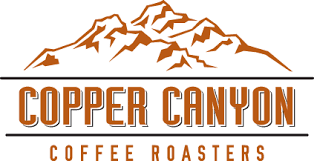
Roasting coffee is kind of like Grandma’s cookies; only a handful of relatives can actually replicate them. There is an adeptness to roasting that not everyone knows. Roasting well requires a fairly comprehensive knowledge about coffee; familiarity with farming practices, understanding brewing principles, knowing about cooking chemistry, a little bit of rudimentary physics, and some basic math are all necessary.
Now, roasting sounds like a fancy word, but it’s really just a dry heat cooking method. With coffee roasting, we are merely managing the heat which is causing thermodynamic (heat) reactions to occur. These reactions transform the composition of the beans into something that we can grind, brew, and enjoy.
Part of being a coffee roaster is knowing what you’re trying to achieve in a bean. So, before starting any roast we’ve already formulated an approach in our mind. We know how we want to shape the coffee beyond just light, medium, or dark. We ask ourselves things like: What type of acidic crispness do we want? How heavy do we want it to sit on the tongue? At what altitude was the bean grown? What is the moisture content? What was the post-harvest processing method? What brew method am I roasting for?…..These questions may seem petty, but they make a world of difference in the outcome.
A simple example of this would be to take a Kenyan coffee that’s chock-full of tart, citric qualities. With all those highly pronounced acids, lightly roasting this bean and serving it as espresso might not be the best approach for a positive guest experience. However, say that your guest likes an iced coffee brewed using a Chemex with an Able filter. In that case roasting that same lemon-lime Kenyan just to the tail end of first crack could be a roasting approach that suits that guest well and gets them pumped.
So, how do we know how to roast something? Keeping in mind that flavor is chemistry, delicious coffee requires an operator who knows how to facilitate chemical changes, the most notable being the Maillard Reaction. The Maillard Reaction is, arguably, the most important chemical reaction in all of cooking – beyond just coffee.
When cooking any food that contains both proteins and sugars, the Maillard Reaction is how we explain the browning effect. A few honorable food mentions are: onions, garlic, coffee, bread, meat, and even beer. The Maillard Reaction is extremely complex and isn’t even entirely understood by scientists, but the gist is that as temperature increases sugars and amino acids bind to create more complex flavors and aromas.
Generally, low moisture is required for browning (which is why adding salt to uncooked food and drawing out the moisture helps with browning). Interestingly, in something like a liquidy stew you can add a touch of baking soda to up the pH enough to facilitate the Maillard Reaction.
Anyway, the point is that less moisture means better browning. Unroasted coffee’s moisture content of around 12% is high enough that browning doesn’t occur unless we help it out. So, one of our first goals is applying enough heat that we begin to draw out moisture, but not so much heat that we scorch the bean – it’s a balance. Once most of the moisture has evaporated the human operator must govern the machine’s heat application and airflow, carrying the coffee through different stages of enhancing sweetness, increasing complexity, controlling acidity, and shaping general taste dynamics.
Consistently controlling the chemical reactions in coffee takes time and education. It’s true that a roasting operation can lack foundational understanding and still hit a home run now and again, just like a blind squirrel finding a nut eventually. But true craftsmanship in coffee requires enough humility to admit that you’ll never be “the” expert in town. Consistently producing quality coffee takes a deliberate focus which few are willing to dedicate themselves to. And like anything worth pursuing, coffee is a process that takes genuine passion and an investment of time.
